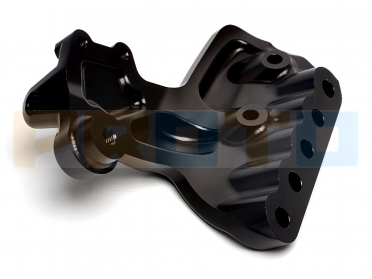Metals
Laser Engraving
Jul,03 2023
Laser engraving technology is a game-changer in the manufacturing industry. It offers a non-contact way of creating intricate and precise markings on a variety of materials. When selecting the right laser engraving type, understanding the material properties and available processing methods is essential. The industry applications of laser engraving are vast, and it has become an essential tool for achieving high accuracy, speed, and precision in manufacturing. By staying up-to-date with the latest laser engraving advances, engineers, buyers, and designers have the ability to create unique and innovative products that meet the needs of their customers.
Nickel Plating
Jul,03 2023
Nickel plating is a widely-used electroplating process that provides excellent corrosion resistance, wear resistance, and oxidation resistance to metal parts. It is extensively used in various industries, including automotive, aerospace, medical, and electronics. However, choosing the right type of nickel plating, understanding its material properties, and selecting the appropriate processing methods can be challenging. In this blog post, we will provide a comprehensive guide to nickel plating, covering its types, material properties, processing methods, industry applications, and parts applications. This guide aims to help mechanical engineers, buyers, and designers who are looking for information regarding nickel plating.
Zinc Plating
Jul,03 2023
Zinc plating is a popular surface treatment known for its ability to protect metal parts from corrosion and wear. This electroplating process involves coating a metal substrate with a thin layer of zinc, which forms a barrier between the metal and its environment. Zinc plating is widely used in a variety of industries, including automotive, aerospace, and electronics. In this blog post, we'll take a closer look at the different types of zinc plating, material properties, available processing methods, and industry and parts applications.
Polishing
Mar,08 2023
Polishing Service is a surface finishing process that is commonly used in precision machinery and optical industries. The main purpose of this process is to reduce surface roughness and provide a smooth and reflective surface on CNC components or workpieces. Polishing is achieved using physical machinery or chemicals, such as sandpaper, flat wheels, abrasive sticks, ultra-precision polishing tools, and turntables. Polishing is a great way to impart a sheen to cottons without making them stiff as glazed types. It is usually achieved by mercerizing the fabric and then passing it through friction rollers.
Anodizing Type III / Hardcoat Anodizing
Mar,08 2023
Anodizing Type III, also known as hard anodizing, produces a much thicker and denser layer of aluminum oxide than Type II anodizing. The layer is typically between 25 and 100 microns thick. This layer is harder, more wear-resistant, and provides better corrosion resistance than Type II anodizing. Anodizing Type III is often used for high-wear applications, such as aerospace components, firearm parts, and hydraulic pistons.
Anodizing Type II
Feb,07 2023
Anodizing Type II is a process that involves creating a protective oxide layer on metals using an electrolytic solution. This process has become increasingly popular in various industries because it not only improves durability but also enhances aesthetics.





